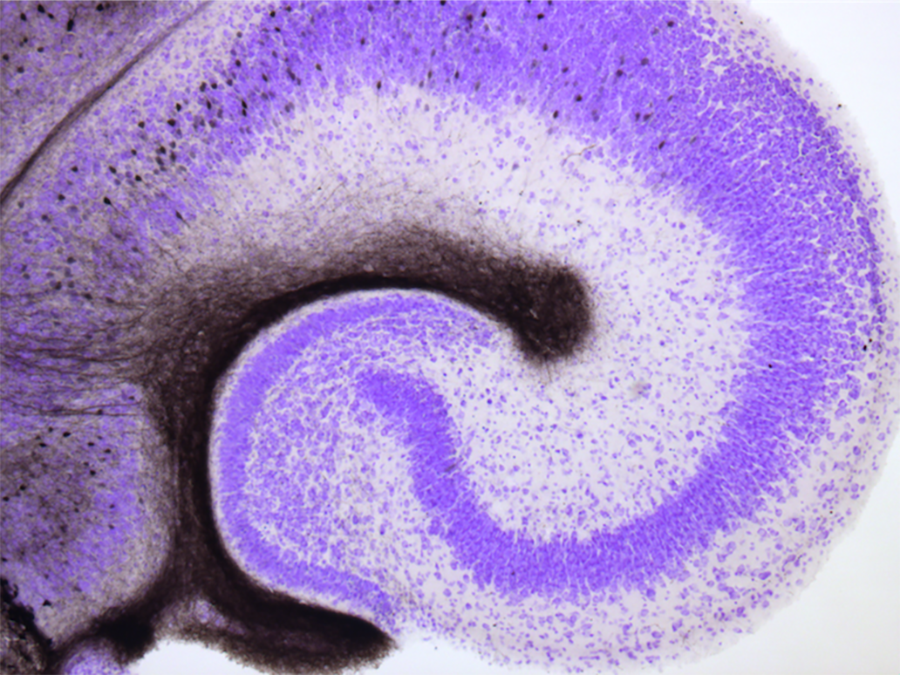Insights into hippocampal network function
A new study proposes a full-scale model of the entorhinal cortex–dentate gyrus–CA3 network, providing a conceptual overview of the computational properties of this brain network, to show that it is an efficient pattern separator.

Hippocampus according to the late Michael Frotscher, founding member of the Bernstein Center Freiburg
Bernstein member involved: Ad Aersten
/BCF/ There is hardly an area in the mammalian brain on which so many experimental facts are known as the hippocampus. Both the anatomy of its network circuitry and the physiology of its constituent neurons and synapses have been characterized in remarkable detail. For many years, the hippocampus has also been the prime target area when studying synaptic plasticity and its role in learning and memory. Yet, despite this wealth of experimental data, there is still no clear understanding about how the specific properties of network circuitry, neurons and synapses contribute to the purported function of the hippocampal network.
Writing in Nature Computational Science, Peter Jonas, founding member of the Bernstein Center Freiburg (BCF) and his colleagues at the Institute of Science and Technology (IST) in Vienna (Austria) propose a biologically realistic, full-scale network model to show that these various specific properties and their intricate interactions optimize higher-order computations performed in this biological network. The paper is commented upon in a “News & Views” in the same journal by Ad Aertsen, founding director of the BCF.
In their study, the authors focus on pattern separation, but pattern completion is also considered. Specifically, they address the following question: whether and to what extent the three-layer feedforward network provides the anatomical, physiological and biophysical properties to support the computational process of pattern separation. To this end, they developed, implemented and simulated a network model of this brain network, including most of the known cell types in the circuitry, using realistic values of network connectivity, cell properties, synaptic dynamics and other biophysical properties — many of them stemming from their own experimental work. Importantly, the authors chose to make a full-scale model of the network, thereby avoiding the complex issues involved with scaling connectivity, neuronal and synaptic properties with network size.
Taken together, the paper provides a comprehensive and innovative conceptual overview of the computational properties of an important brain network, on which the literature up till now has been riddled with many isolated experimental facts and numbers, without a clear view regarding the functional role of these various facts and numbers.
Original Publications
S. Jose Guzman, Alois Schlögl, Claudia Espinoza, Xiaomin Zhang, Benjamin A. Suter, and Peter Jonas (2021) How connectivity rules and synaptic properties shape the efficacy of pattern separation in the entorhinal cortex–dentate gyrus–CA3 network. Nature Computational Science. https://dx.doi.org/10.1038/s43588-021-00157-1.
Ad Aertsen (2021) News & Views: Insights into hippocampal network function. Nature Computational Science. https://dx.doi.org/10.1038/s43588-021-00159-z.




